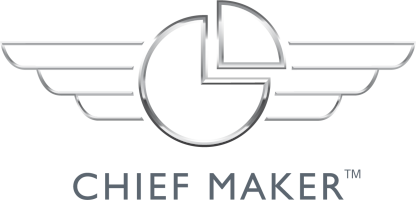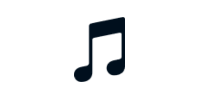
Subscribe to Spotify![]()
In this Best of Series episode of The Inner Chief podcast, I speak to Ted Prodromou, America’s #1 LinkedIn Coach, on perception, connecting properly with purpose, and standing out online.
Ted has bounced back from many setbacks; not only did he survive the dot com crash, which wiped out his successful 20-year tech career working for companies like IBM, he then came out the other side of the Global Financial Crisis of 2008, which turned his consulting business upside-down.
Today, Ted is America’s #1 LinkedIn coach and he helps clients to super-charge their online profile and presence, and how to connect properly with purpose.
He is the author of the Ultimate Guide to LinkedIn for Business and has also been featured on Entrepreneur.com, the New York Times, CNBC, and Forbes.
In this episode we talk about:
✅ How he got made redundant 3 times in 12 years
✅ How co-writing a book with Perry Marshall launched his LinkedIn coaching career
✅ Some simple tips on how to make your LinkedIn profile really stand out, and
✅ How to dial up your LinkedIn content management so that you are perceived to be associated with well-known brands.
Deal hope,
Greg
A special thanks to Alex Mandossian for recommending Ted.
Connecting with Ted Prodromou
You can connect with Ted via LinkedIn.
Books and Resources
- Ultimate Guide to Linked In for Business – by Ted Prodromou
- Contribution to an article on predicted LinkedIn trends for 2019 on Digital Marketer (Ted’s piece is two-thirds down the article)
- Snappr, a great resource for taking a high-quality LinkedIn professional photo
- How to Win Friends and Influence People – by Dale Carnegie
- Leadership and Self-Deception – by The Arbinger Institute
Similar Episodes on Social Media
- Natalie Speers, Founder & CEO of Social Ally, on being an early adopter, how anyone can thrive on social media, and visual disruption
- Alex Mandossian, CEO and Founder of Marketingonline.com, on ethical influence and the art of storytelling
- Jack Slade, Managing Director of Luxity Media, on being an accidental entrepreneur, saying no to increase revenues, and the future of new media
“We all have that experience where you connect with people and then they immediately try to sell you something, sometimes even in the invitation to connect!”
On the LinkedIn platform as a whole
- LinkedIn has been rolling out updates like crazy and they really are pushing it as a content management platform, content distribution. So you post a video on there now, and it goes out to first, second and third-level networks.
- First-level is people who have accepted invitations with each other; so when we connected, your network became my second-level network. And then there’s the third-level network behind that.
- So now, content that you post isn’t only seen by people you’re directly connected with, it's seen by everybody, and it’s pushed out to Google and Bing now, and all the different other search engines.
- 83% of people will look at your LinkedIn profile now before they take a meeting with you. I’m always harping on telling people, “You need to complete your profile to make a great first impression!” What impression does that make of your company if somebody comes to your website and it's horrible looking? Or like a third-grader put it together or something like that? Same with your LinkedIn profile.
On your profile picture
- They've made the images fit better, but with your cameras today, you can take a great picture. Stand in front of a blank wall and have somebody take your picture.
- Don't crop out a photo of you at a wedding or something or with a busy background. This is your professional image, people are out there looking at you.
- Say you're going to a meeting, you're trying to sell a $20,000 coaching package to a client. And they just looked at your profile and it's you half-drunk in a wedding somewhere and you got somebody cropped out and it's all blurry. And then you come in and say, “My charge is $20,000.” And they think, “Who is this guy?”
On a professional headline
- The professional headline is right under your name and by default, LinkedIn takes your current job title and sticks it in there, but you can edit it to make you stand out.
- If you search for an “executive coach” on LinkedIn, there are literally millions of people with “executive coach” in their title. And almost all of them will have their job title, like “Executive Coach at XYZ Company.” That doesn't make you stand out. People are scrolling on their phones now, most of the time, so you have one second to get their attention.
- So I always use the USP – Unique Selling Proposition. What problem do you solve and who do you solve it for? Get that into your headline and they'll click on it and learn more about you. I have the keyword phrases in there.
- One of my clients was a financial advisor, so I helped her create it. It said, “Would you like to retire with the same standard of living you have now or better?” That just got people's attention.
- Treat it like a sales letter, or an article. The headline of the article or a book. What's going to make you pick up a book at the library and read it? The title. We're all in sales, whether we're working for a company or not. To get the job, you have to go in and sell yourself.
On profile improvements
- Tell your story. Don't put it in the third person. It's more conversational and people really get to know you and like you faster. If you're writing in the third person, it’s pretty stuffy.
On posting content on LinkedIn
- My strategy is to post a lot of other people's content, such as other LinkedIn experts’ from their blogs. And people ask, “Why are you sharing your competitor's information?” And I reply, “Because I thought it was a good article and a great tip.” I learned this from Dan Kennedy years and years ago when I was learning marketing and I was failing as a coach, he said, “The pie is big enough for all of us. You don't need to go after your competitors and destroy them.”
- One of my wife's co-workers, her husband came up to her and said, “Wow, Ted is all over the internet, man, he is just crushing it.” And I'm just laughing because I write 20% of the content on my feed and 80% I'm sharing other people's posts. I've got it all automated through a programme called Sendible. Just pumping content out there with my name associated with it. So even if I share an article from Forbes magazine, people perceive me with Forbes magazine because they see my name with Forbes. It's all perception. But consciously, they're thinking, “Oh wow. Ted's really, he's posting 10 or 12 times a day on social media. He must be really famous and really know what he's doing.”
- Post as much as you can, but don't sit there and blast. Sometimes I'll connect with someone on LinkedIn and I'll see them all of a sudden, they're posting six or seven times an hour. That's too much. I do six to ten posts a day on LinkedIn throughout the day. I wrote four books now so I hired someone to go through the manuscripts and they created social media posts from excerpts from the books. And then I have those in these queues in Sendible so that they're just always going and recycling. Each post comes back about every three or four months, because I've got so many posts queued up now. But otherwise, I actually blocked out time to start writing one article a week.
On writing an engaging LinkedIn article
- One really good trick, there's a site called quora.com, and people are asking questions about everything there. And I have a friend, he gets all of his LinkedIn consulting from answering questions on Quora and speaking engagements. And the articles only need to be about 500 words anyway.
- And don't make it all like you're perfect. I share a lot of vulnerabilities, things that have happened to me, big failures in my life. I share all that, and I send out to my email list, you wouldn't believe how many people reach out.
On accepting LinkedIn connection requests
- Everyone has all sorts of philosophies about accepting certain people or should they try to reach out to certain people. I kind of filter out people if their profile looks not great or they didn't even put a job title in. I won't accept them if they don't have a picture. And not to pick on certain people, but a lot are SEO experts and marketing experts, I don't accept theirs, because they're just going to try to pitch me something. I know they're trying to grow a business and stuff but they're not going to add value to my network. Just think about that. Who are all these people connected with, would their connections be valuable to my network?
- If it's the CEO-level or C-level, a lot of times, they don't really log into LinkedIn very often. Only 24% of LinkedIn members log in more than once a month. Now they're almost at 600 million, so that's still a lot of people that are active on LinkedIn. But with LinkedIn, if it's the CEO that you're trying to get to, you can send an InMail to them, but don't just say, “Hey, I want to connect because I want to work for you.” You have to compliment them and get creative of what's going to get them to accept your invitation. Open the conversation on other social networks.
- I've seen a new trend on LinkedIn. I don't know if you're getting this too. We all have that experience where you connect with people and say, “Hey, thanks for connecting.” And then they try to sell you something, a long sales pitch. Now they're starting to do that in the invitation to connect. Like, they're not even waiting to connect, they're already trying to sell me before I say, “Sure, I'll be your friend.”
- At least three times a week, people send me a message. “Hey, do you need help with your LinkedIn? We are a LinkedIn lead generation firm.” I'll reply and say, “Did you read my profile?” They'll say, “Yeah, I read your profile.” I'll say, “What do I do for a living?!”
Final message of wisdom and hope for future leaders
- Treat people with respect and treat everyone like you're their friend and just help people as much as you can,
- Don't focus on selling and making money, focus on making a difference in the world. We need it right now, it's tough out there.
Deal hope,
Greg
MINI-MBA PROGRAM
 12 week leadership development program
12 week leadership development program
Limited places available
Next intake starting soon!






